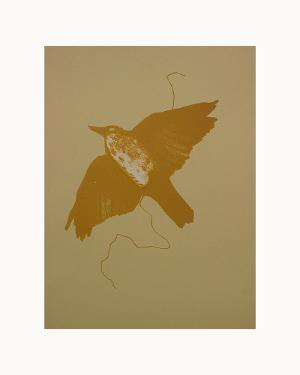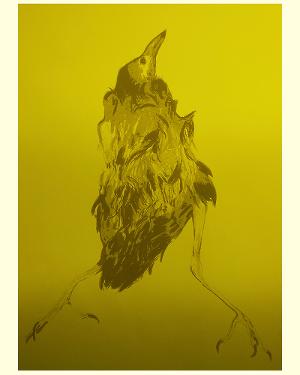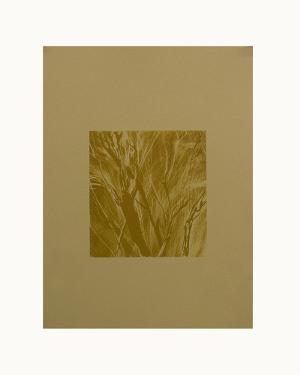December 27, 2023
KCAD student completes highly selective Tamarind Institute of Lithography program, looks to bring new life to centuries-old medium
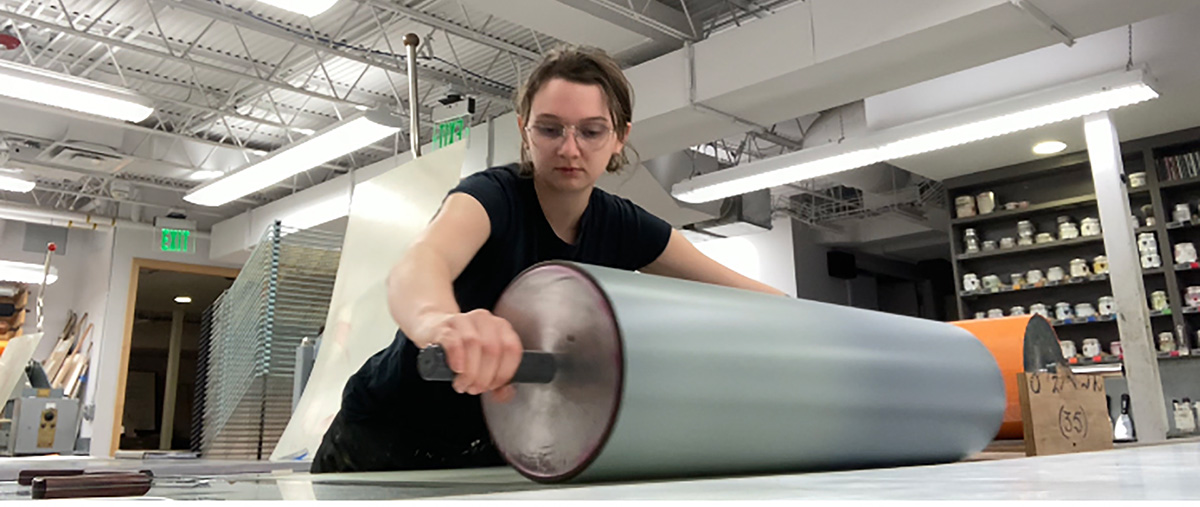
BIG RAPIDS, Mich. – After completing the world’s premier program for lithography, Kendall College of Art and Design of Ferris State University alum Katherine Westbrook is on a mission to help give the centuries-old artistic medium new life in the 21st century.
The renowned Tamarind Institute of Lithography at the University of New Mexico is widely credited as the modern steward of lithography, a method of printing invented in 1796 in which a design is drawn onto a flat stone or a prepared metal plate and then transferred to another surface via chemical reaction.
Tamarind’s Printer Training Program is highly selective, with no more than eight students admitted each year. Participants expand their technical and professional skills while helping other artists explore lithography’s vast creative possibilities.
For Westbrook, who graduated from KCAD in 2022 with a Bachelor of Fine Arts in Printmaking, spending a year immersed in the medium only deepened her appreciation of it.
“What I find the most endearing about lithography is how complicated it is,” she said. “You need a very technical understanding to be able to execute it successfully, and even then, you still mess up sometimes. But the joy of lithography for me is the versatility of it. It can look like a graphite drawing or painting, or it can be very graphic, almost like a screen print.”
Becoming a master printer goes beyond technical expertise. Westbrook also learned how to manage a studio environment, communicate with others, and solve the inevitable problems that arise during the creative process.
“I was expecting the rigorous training in technique, but we got trained in so much more: life skills, business practices, time management, and everything that you would expect professionally,” she said. “It’s about approaching things calmly and very methodically, with a clear understanding of what you're doing on every level.”
Westbrook had ample opportunity to put her training to the test. She and her classmates were in constant collaboration with four University of New Mexico art students and two established artists, all from different creative disciplines and with little to no experience in lithography.
Working with painters, drawers, and sculptors, Westbrook soon discovered that no two partnerships were alike.
“It's really fun to work with artists outside of printmaking because they have such a different way of thinking,” she said. “It helps grow the medium when you're working with someone who doesn't necessarily understand it. That's critical if we want lithography and printmaking to continue to develop.”
Throughout the program, Westbrook learned to intuit other artists’ needs and help them get comfortable with lithography. She developed a process of giving them a small test stone to experiment with, tweaking the materials and techniques until they found a combination to their liking, and then scaling up to the full-size project.
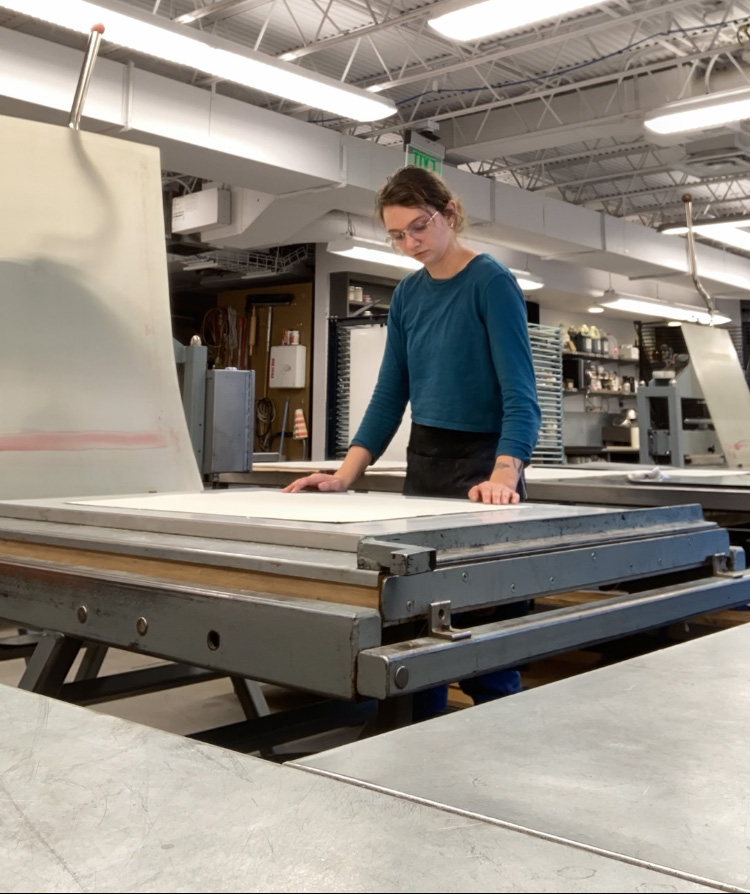
With the result being large-scale prints with multiple colors and layers, that initial time and labor paid off handsomely. As Westbrook said, “The exciting part is getting to see their faces as you pull a proof!”
Those rich experiences inspired Westbrook to start thinking about how she could make lithography more accessible to other artists. Despite its rich history, the artform remains a bit arcane and out-of-reach for many aspiring printers.
“You have this big chunk of limestone, and this big, big press, a bunch of toxic chemicals, and all of this technical knowledge that isn't available to most people because you can only get it through education, literature that’s behind a paywall, or word of mouth,” she explained. “I don't think that's reasonable if we want to see this medium continue on into the future.”
Westbrook’s solution: developing a curriculum to teach lithography techniques to other artists through a streaming workshop—a task she managed alongside her education. Over 100 people from around the world joined her first workshop to learn about tusche wash, an advanced lithography technique. Through step-by-step demonstrations, she showed how to prepare the materials and control the chemical reactions to achieve the desired results.
The opportunity to share her knowledge and answer questions from the art community resonated deeply with Westbrook. While she plans to continue printing in her own studio, she’s also determined to keep widening the sphere of understanding and engagement by leading classes or workshops that help people meet lithography where they are.
That spark she feels from connecting with other people, whether they’re established artists or just beginners, is something that will continue to shape Westbrook’s career. She’s currently establishing a lithography practice and workshop at San Jose, Calif.-based art studio Visual Philosophy that she hopes to use as a platform for her creative and educational pursuits.
“Knowing that I can do way more than what I could even a year ago--I don't want to keep this knowledge to myself,” Westbrook said. “I want to continue to spread it, and we have a whole new world of opportunity in front of us when it comes to how to do that.”
Additional information about Katherine Westbrook is available on her website or @eastcreekpress on Instagram.


